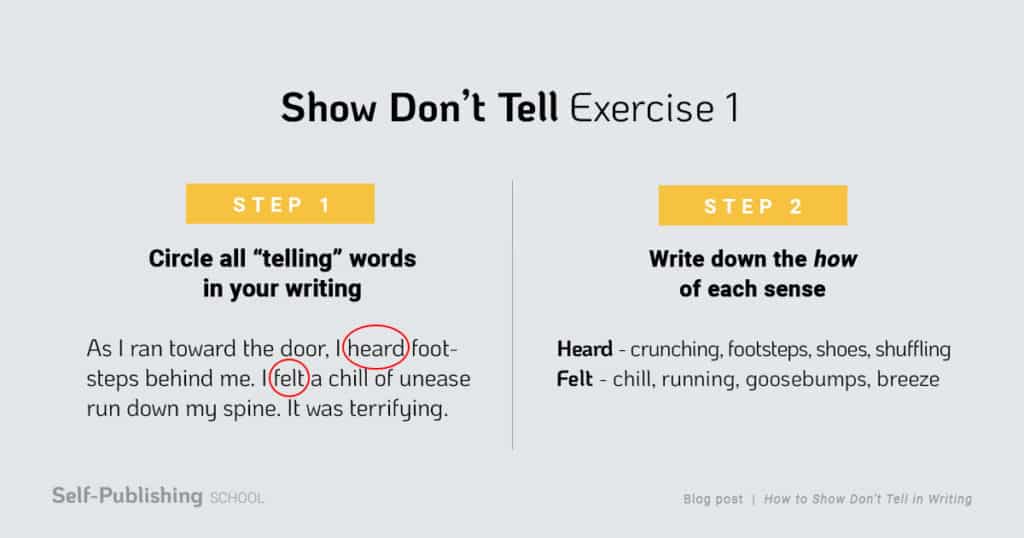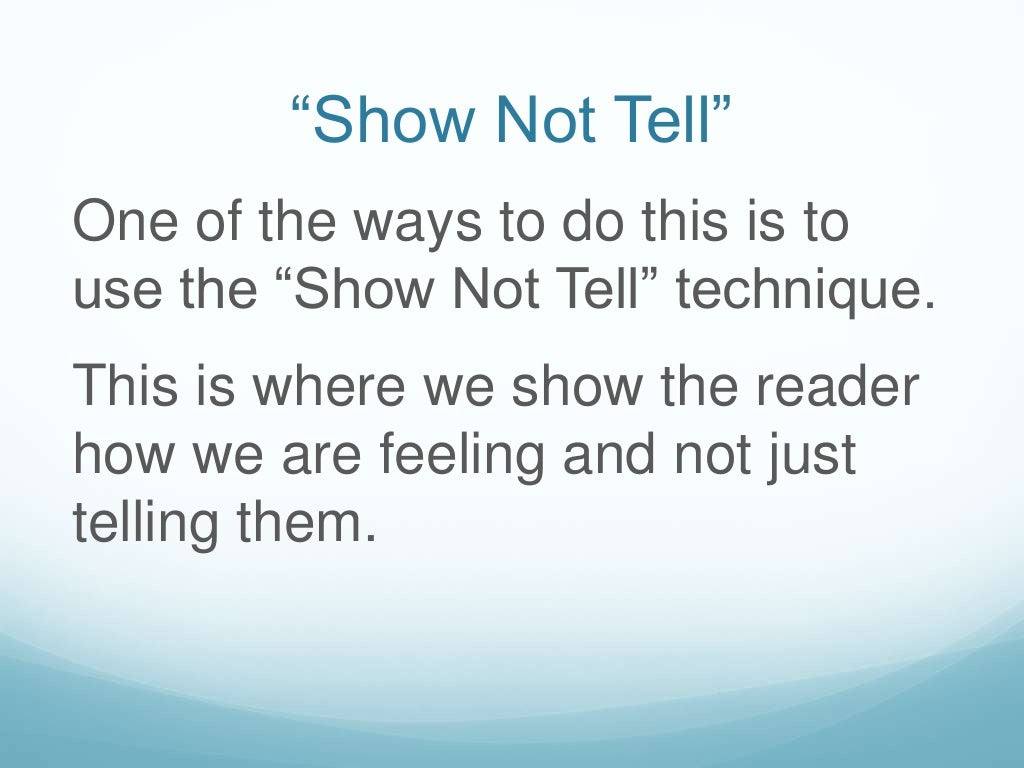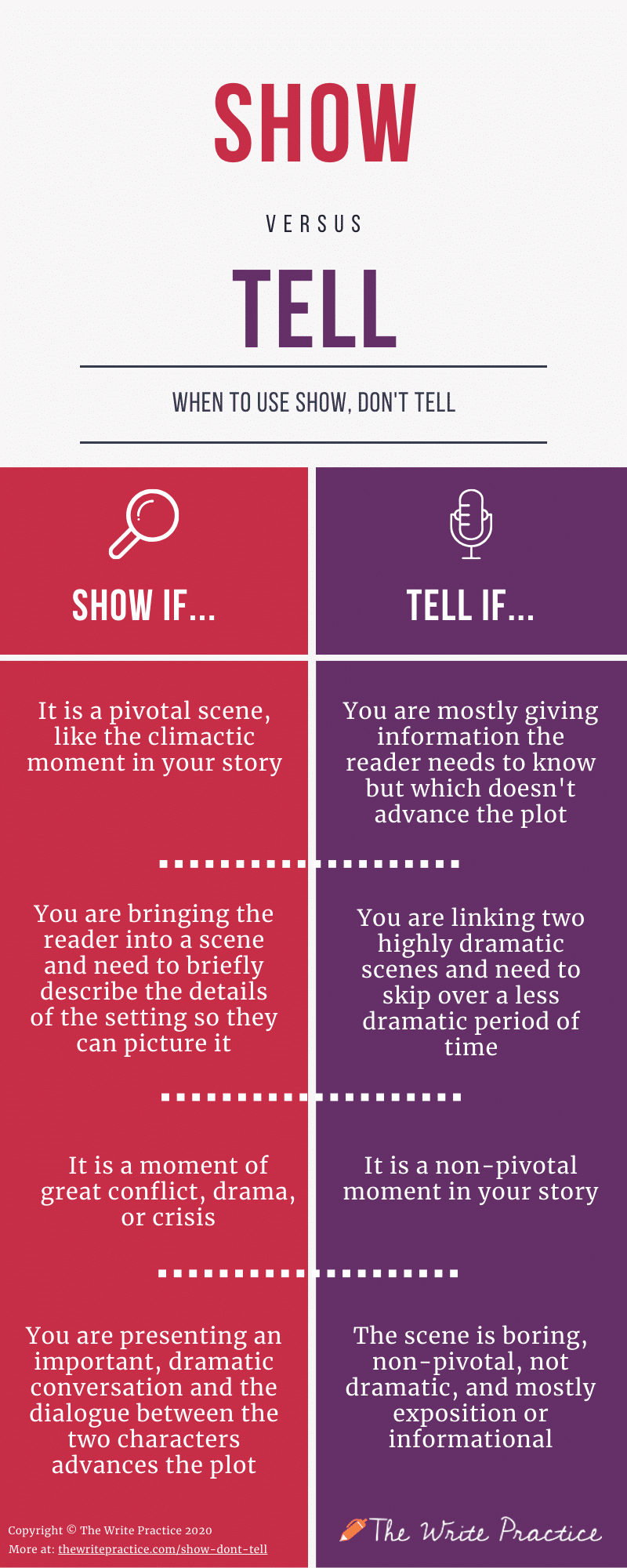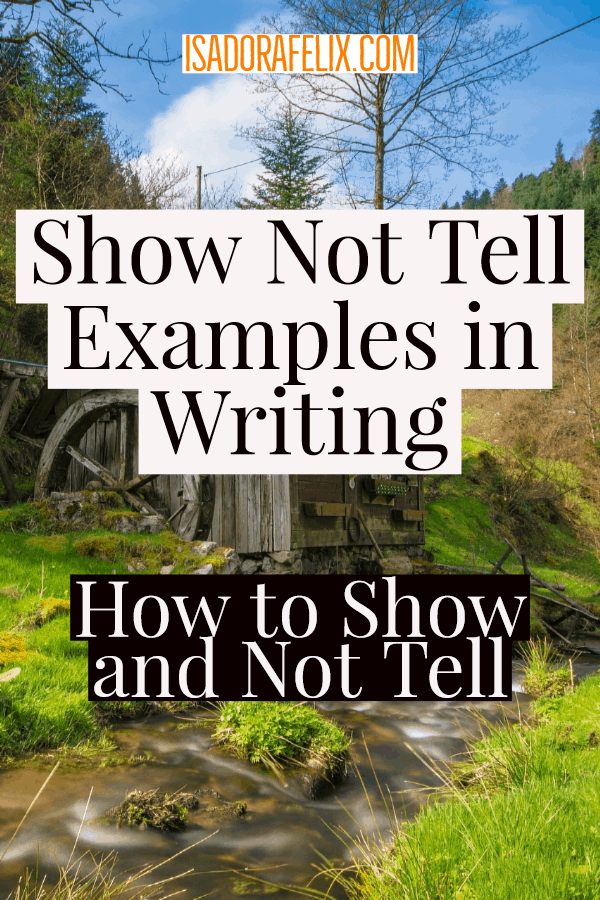Show, Don't Tell The Secret to Great Writing with Show and Tell Examples

Show Don't Tell How to Show Not Tell in Your Writing
The Difference Between Showing and Telling. "Show, don't tell" means you must demonstrate action through your writing instead of having a narrator just talk about action. When you tell the reader that your protagonist is strong, brave, and intelligent, that's telling, and too much telling makes for very boring reading.

Writing Tips Show Don’t Tell
Examples of "Show, Don't Tell" in Popular Novels How to Show Not Tell in Writing: Four Expert Tips Is Telling Ever Acceptable? Conclusion on "Show, Don't Tell" in Writing Quick Definition and Meaning of "Show, Don't Tell"

Show not tell
Examples of Show Don't Tell What Does Show Don't Tell Mean? "Show, don't tell" is a writing technique that allows the reader to experience expository details of the story through actions, sensory details, words, or the expression of characters' emotions, as opposed to through the author's own description of events.

Show Not Tell writing anchor chart Writing anchor charts, Writing lessons, Writing skills
MANUSCRIPT MENTORING Query Letter and Submission Services > Show, Don't Tell (With Examples) Show, Don't Tell (With Examples) Writers often labor away to get a description exactly as they want it—only to have it returned with, "Don't tell me, show me," scrawled in the margin by an editor or writing mentor.

1000+ images about Show not tell on Pinterest Writing, Anchor Charts and Teaching Tools
This example gives us useful show don't tell tips: Telling has its place - use it to give the reader secondary information such as how a character gets from A to B. Unless something crucial happens to your character during her journey, the reader doesn't need every detail of her commute. Keep the detail of showing for scenes that deepen.

Show, Don't Tell The Secret to Great Writing with Show and Tell Examples
"Show, Don't Tell" is an immersive method of writing in which characters and story are related using sensory details and actions. The point of "showing" is to pull the reader into a story by engaging all five of their senses.

Show Not Tell Examples in Writing How to Show and Not Tell
Here's a quick example: Showing: As his mother switched off the light and left the room, Michael tensed. He huddled under the covers, gripped the sheets, and held his breath as the wind brushed past the curtain. Telling: Michael was terribly afraid of the dark.

Writing SHOW don't tell. Literacy Coaching, Teaching Literacy, Teaching Writing, Writing
6 Examples of "Show, Don't Tell" What is "Show, Don't Tell?" "Show, don't tell" is often uttered by teachers and editors alike, but what exactly does it mean? Basically, "showing" and "telling" are two different writing techniques. Telling is the act of describing an action, setting, object, person, or other element in the story objectively.

Pin on Fotos de capa
T hese examples of "Show Don't Tell" will inspire you to tell better stories by directing a mental movie in your readers' minds. This article includes: What is "Show Don't Tell?" A "Show Don't Tell" exercise 21 "Show Don't Tell" examples How to show AND tell How to apply "Show Don't Tell" Show, Don't Tell Helen frowns while reading her draft story.

Show, Don't Tell Comparison (Beth Newingham) Writing lessons, Teaching writing, Descriptive
So, do not use adverbs; replace them with the impact of those adverbs. #5. Avoid 'Telling' Verbs. If you want to follow the 'show don't tell' rule, avoid using the telling verbs like wondered, smelled, saw, thought, heard. These are telling verbs that put the reader out of a character's experiences. #6.

My students have such a hard time with adding description to their writing. These Show Don't
'Telling' is like a big neon sign. It's the most obvious clue you are reading an amateurish, unexperienced writer. Don't do it! So in honor of showing, this post will lay out for you how exactly you can use the good, old 'Show, don't tell' to create unforgettable stories. In this post, find the answers to the following questions:

Show, Don't Tell Writing lessons, Teaching writing, Classroom writing
Here's how to show and not tell: If your character is tall, your reader can deduce that because you mention others looking up when they talk with him. Or he has to duck to get through a door. Or when posing for a photo, he has to bend his knees to keep his head in proximity with others.

Using Show not Tell in Writing; Complete Lesson Mr Stink Writing Similes, Persuasive Writing
Telling: She was hungry. Showing: Her stomach tied itself in knots and reached through her throat to grab the aroma of breakfast at grandma's house - buttery eggs mixed with bacon grease and sticky-sweet syrup on stacks of pancakes. She tried to remember the last time she'd eaten that day.

Show Not Tell resource sheet Teaching Resources
"Show, don't tell" is a popular piece of creative writing advice to write with more sensory details, allowing your reader to hear, see, taste, touch, and smell the same things your fictional characters experience.

Show Don't Tell Anchor Chart! This blog post contains a complete writing lesson and the
No nothing. You are simply stating a fact from your story. As showing would be: "Blake got into the school hall and sighed loudly. He would rather be anywhere in the world but there. He walked towards his lockers but felt someone pushing him, so he was thrown onto the hard floor. He hit his chest and it hurt so much, that tears got into his eyes.

Show, Don’t Tell What It Is and How to Use It (With Examples) All Write Alright
Show don't tell describes writing in various forms with an emphasis on using and showing actions in order to convey the emotions you want readers to interpret, which creates a better experience for readers, instead of writing exposition to tell what happened.